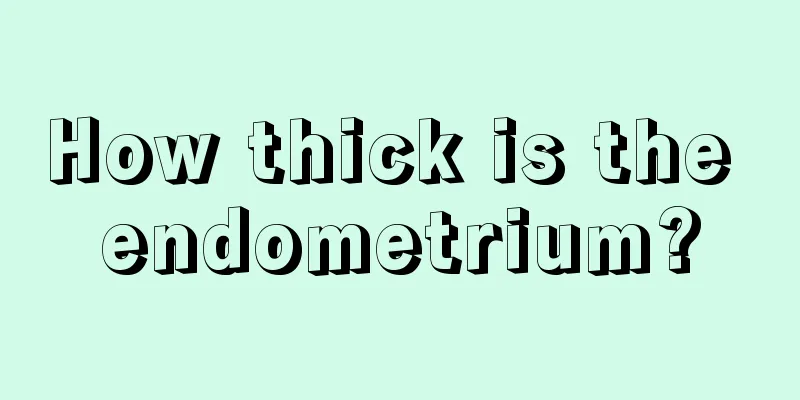Will the endometrium swell due to intrauterine adhesions?

|
Intrauterine adhesions are a disease that affects the growth of the endometrium. This disease is mainly caused by chronic inflammation. Since the fertilized egg is not easy to implant, severe cases will affect reproductive function, so active treatment is required. This disease is best treated with a combination of Chinese and Western medicine. Patients should pay attention to rest, avoid catching cold, avoid eating spicy food, and also have a good attitude. Hysteroscopy is currently an effective means of treating intrauterine adhesions and is also the gold standard for diagnosis. It is a invasive surgery that reduces complications. Complications during hysteroscopy may include perforation, bleeding, shock, and even death. The surgery requires evaluation of the thickness, type, and blood flow of the endometrium, and assessment of the entire length of the cervical canal, internal cervical os, uterine cavity, and fallopian tubes. If necessary, perform laparoscopic curettage. 1. Hysteroscopic treatment Mild membranous adhesions can be bluntly separated (pushed, pushed, and peeled) with the tip of the hysteroscope; dense adhesions can be separated with micro scissors, forceps, needle electrode electroresection or laser surgery; severe adhesions: because perforation and bleeding are prone to occur at the edges or fibromuscular adhesions, they are often performed under laparoscopy or ultrasound monitoring. 2. Laparotomy Transabdominal hysterotomy for the treatment of intrauterine adhesions is rarely used now unless hysteroscopic separation is difficult. Prevention of intrauterine adhesions after surgery: Since intrauterine adhesions are prone to recurrence, especially severe ones, the recurrence rate can be as high as 62.5%, and repeated surgery and separation effect evaluation are often required. Therefore, preventing recurrence is the key to successful treatment. ① Placement of intrauterine device: Routine placement of intrauterine device after surgery is a widely used and effective method to prevent adhesions, and it is generally placed for at least 3 months. ② Placement of balloon catheter: The water-filled balloon acts as a barrier in the uterine cavity, effectively separating the front and back, upper and lower, and left and right side walls of the uterus, and effectively preventing re-adhesion of the uterine cavity. ③ Sodium hyaluronate: Sodium hyaluronate has a mechanical barrier effect and reduces the occurrence of intrauterine adhesions. ④ Medical chitosan and amniotic membrane transplantation. ⑤ Drugs: mainly continuous stimulation of endometrial growth such as estrogen-progesterone cyclical therapy, vasodilators, growth hormone, etc. |
<<: How to restore an enlarged uterine cavity to normal?
>>: How is the uterine mass formed?
Recommend
How to wear underwear to make your breasts look bigger
Many women have very small breasts due to poor de...
The most important part of a girl
People often say that women are flowers. In fact,...
Do pregnant women need to fast for routine blood and urine tests?
Regular checkups during pregnancy can help doctor...
Health Science | Decreased sensation in the hands or numbness in the fingers is not necessarily caused by cervical spondylosis
Many people say, "Loss of sensation in the h...
Endometrial polyps
Endometrial polyps are a common gynecological dis...
Treating female endocrine disorders
Nowadays, women have to bear a lot of pressure in...
Laundry detergent plus 84 has almost no disinfection effect? Disease control experts: The correct usage is...
Expert of this article: Yang Chao, PhD in Chemist...
Why is the red pitaya sweeter than the white pitaya? Is the pitaya afraid of freezing?
Dragon fruit contains a lot of sugar and nutrient...
Belly itchy at 5 months pregnant
Around the fifth month of pregnancy, the belly be...
Can I take a shower during my period?
Adult women will have their periods as scheduled ...
38 weeks pregnant lower abdominal pain
When a woman is 38 weeks pregnant, she has alread...
Breast swelling and menstruation has not come yet
If female friends experience breast swelling and ...
Solutions for nipple pain during pregnancy
Many women experience nipple pain during pregnanc...
What to eat when you have diarrhea in late pregnancy
If a pregnant woman experiences diarrhea in the l...
What to do if the cervix changes like erosion
If women do not pay enough attention to their own...









